In project management, resources are the people, tools and materials necessary to get the project done. In other words, resources are important—and so is resource management.
A resource histogram is a statistical tool used to manage resources. It’s a historical bar chart diagram that defines a resource allocation schedule. Resource histograms help project managers with resource planning and quality management.
Project management software has made resource histograms somewhat obsolete, but it still can show up in the PMP certification exam. Therefore, it doesn’t hurt to get a handle on resource histograms.
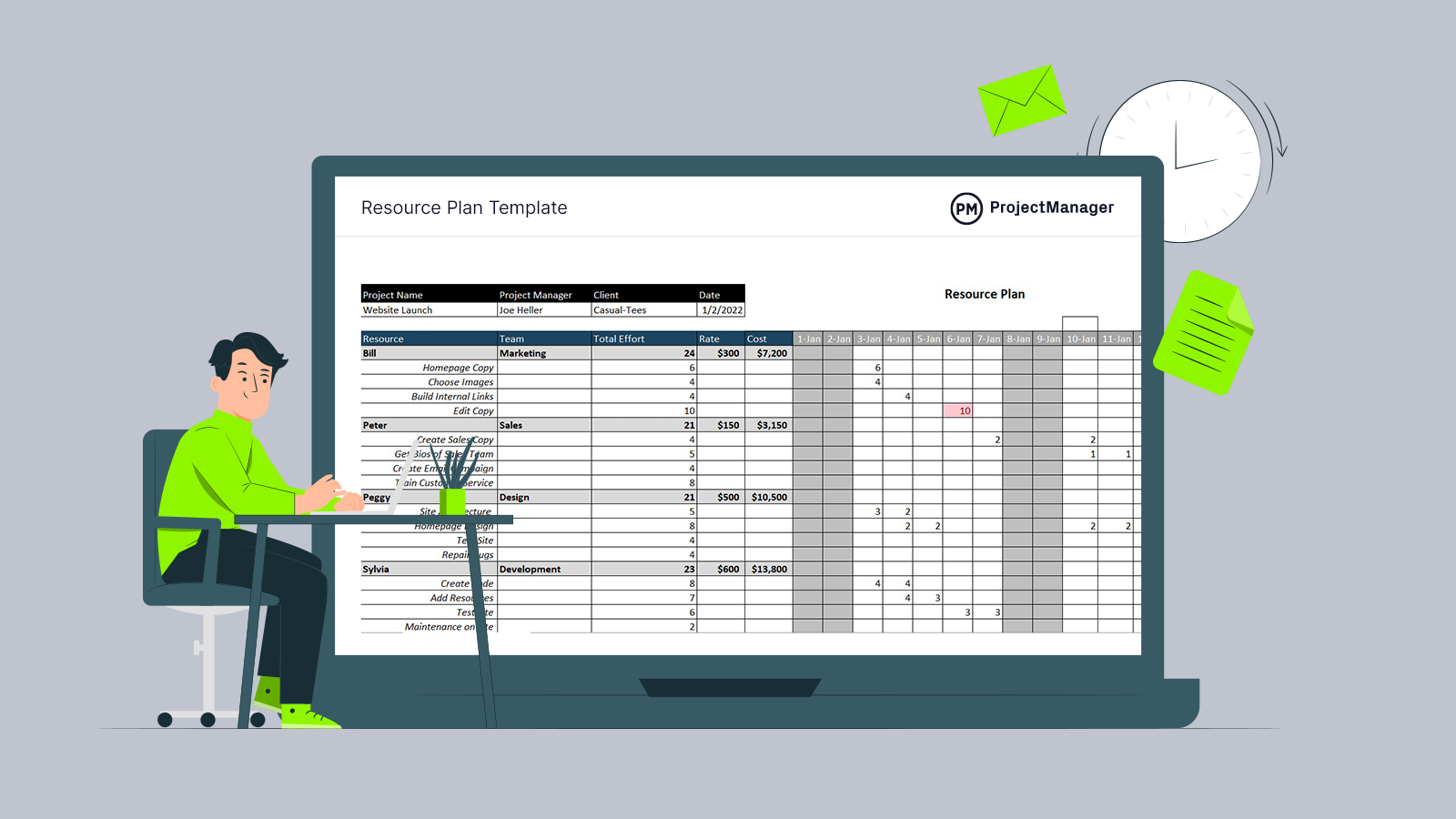
Get your free
Resource Planning Template
Use this free Resource Planning Template for Excel to manage your projects better.
What Is a Resource Histogram?
A resource histogram is a stacked bar chart that is used for resource allocation in project management. It’s a resource planning graph that displays the amount of time a resource is scheduled to work over some time. It can also be used to determine resource availability.
Having the resources you need, when you need them, is how tasks in the project are executed efficiently. Project managers use resource histograms as they monitor the project and track its progress. The information they pull from a resource histogram gives them an idea of where their resources are and how they’re being used.
Resource histograms have a horizontal axis that shows the range or value of gaps between variables, and the vertical axis, which represents the number of times that the interval occurred. The bars represent the resource. There’s also a legend that identifies each bar.
Project management software almost always has a Gantt chart, which is one of the key resource planning and project scheduling tools used by project managers. ProjectManager is a cloud-based software that takes Gantt charts further than traditional project management tools. It tracks both human and nonhuman resources and can set a baseline to track actual effort versus what you planned. Try ProjectManager today for free.
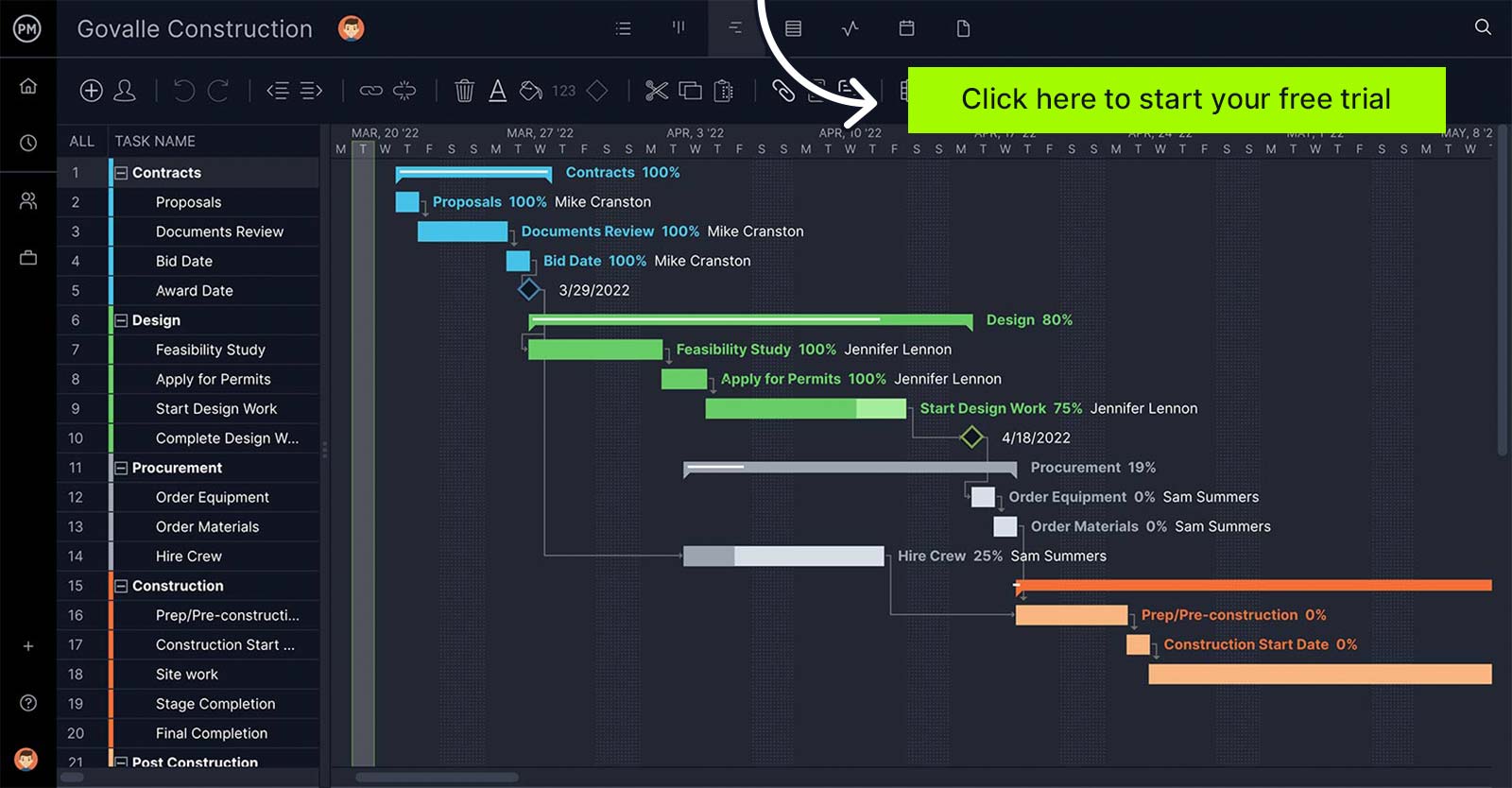
Why Use a Resource Histogram?
Project managers use a resource histogram to make sure their resources are being allocated correctly. They offer a quick and easy way to take a look at resource utilization. According to the American Society of Quality (ASQ), the histogram is the most commonly used quality tool.
Resources captured in the resource histogram are specific to a period, whether that’s current or later in the project. This can help the project manager plan the distribution of the resources throughout the project life cycle.
The resource histogram shows the number of resources used in each period, not dissimilar to a Gantt chart (which is also a stacked bar chart). However, a Gantt chart is a more robust project management tool that can also be used to schedule, assign and track resources, tasks and more.
Why Is a Resource Histogram Important?
If you’re not using project management software, then you need some sort of resource management tool. The resource histogram isn’t perfect, but it’s better than nothing.
Again, the resource histogram lets you see the individual resources used in your project against the project schedule and resource baseline. It helps project managers make better decisions about how to allocate those resources to complete those activities.
Of course, resource histograms are not the best tool for statistical information. They are static and have to be generated each time to see where your resources are. That involves a lot of time and effort, which not all project teams can provide.
When to Use a Resource Histogram
The project manager can use a resource histogram throughout the project. It can be a very useful tool, even if it takes time and effort to create one in Excel. However, the data it analyzes is important to the resource allocation in a project.
The resource histogram can help the project manager figure out how profitable a particular activity is. They can also monitor different processes in your resource management and analyze them. They can then determine which part of the project might benefit from added resources or is overallocated.
Resource histograms are often used with Gantt charts. This helps project managers better understand the project scope and how and when to use their resources. Of course, project management software is a more dynamic tool.
Pros and Cons of a Resource Histogram
A resource histogram is a tool that has its pros and cons. In a sense, it feels antiquated, part of an older toolbox that is no longer used. But resource histograms do serve a purpose, and people continue to use them for project management. Let’s take a look at the pros and cons of using a resource histogram:
Resource Histogram Pros
- Commonly used graphs to display data
- Easy to compare data
- Work well with large ranges of information
Resource Histogram Cons
- Difficult to extract the exact amount of input
- Inconvenient when comparing multiple categories
- Use a lot of space to display little information
- Can present misleading data
Resource Histogram Example
Resource histograms are made up of:
- A title, which is a brief description of what data is being depicted
- The horizontal axis, which shows the time period
- The vertical axis, which represents the resources
The bars represent the resource, and there’s a legend that identifies each bar.
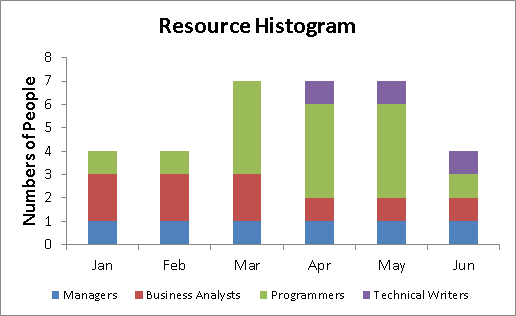
In the above example, the resources are people working over the course of six months. As you can see, the stacked bar chart used is color-coded to show managers, business analysts, programmers and technical writers.
This snapshot of the resources shows that managers are constant, but the need for business analysts dips after three months and programmers ramp up in March through May.
All this resource management information is useful as you’re working on your project. It helps you figure out payroll and who to onboard and offboard from the team (and when). This statistical data is important for project management.
Resource Planning Template
This resource planning template allows you to estimate the resources that will be needed to execute your project, when they’ll be needed and how much they’ll cost. It helps with the resource planning process, which sets the stage for estimating costs and creating a project budget.

How ProjectManager Works Better Than a Resource Histogram
It’s clear that a resource histogram serves a purpose, but it’s also clear that it’s not the best way to get project data. ProjectManager is a cloud-based project management software that manages resources and tracks their use in real time. That way you can always track your project resources and make sure you’ve allocated enough to complete the tasks.
Track Resources in Real Time
When you’re building a resource histogram you need data and then you manually create the graph in Excel. With ProjectManager, you just go to the workload chart and find a color-coded view of all your team’s tasks. See instantly who is over-allocated, and reallocate work right from that page to balance your workload and keep teams working more productively.
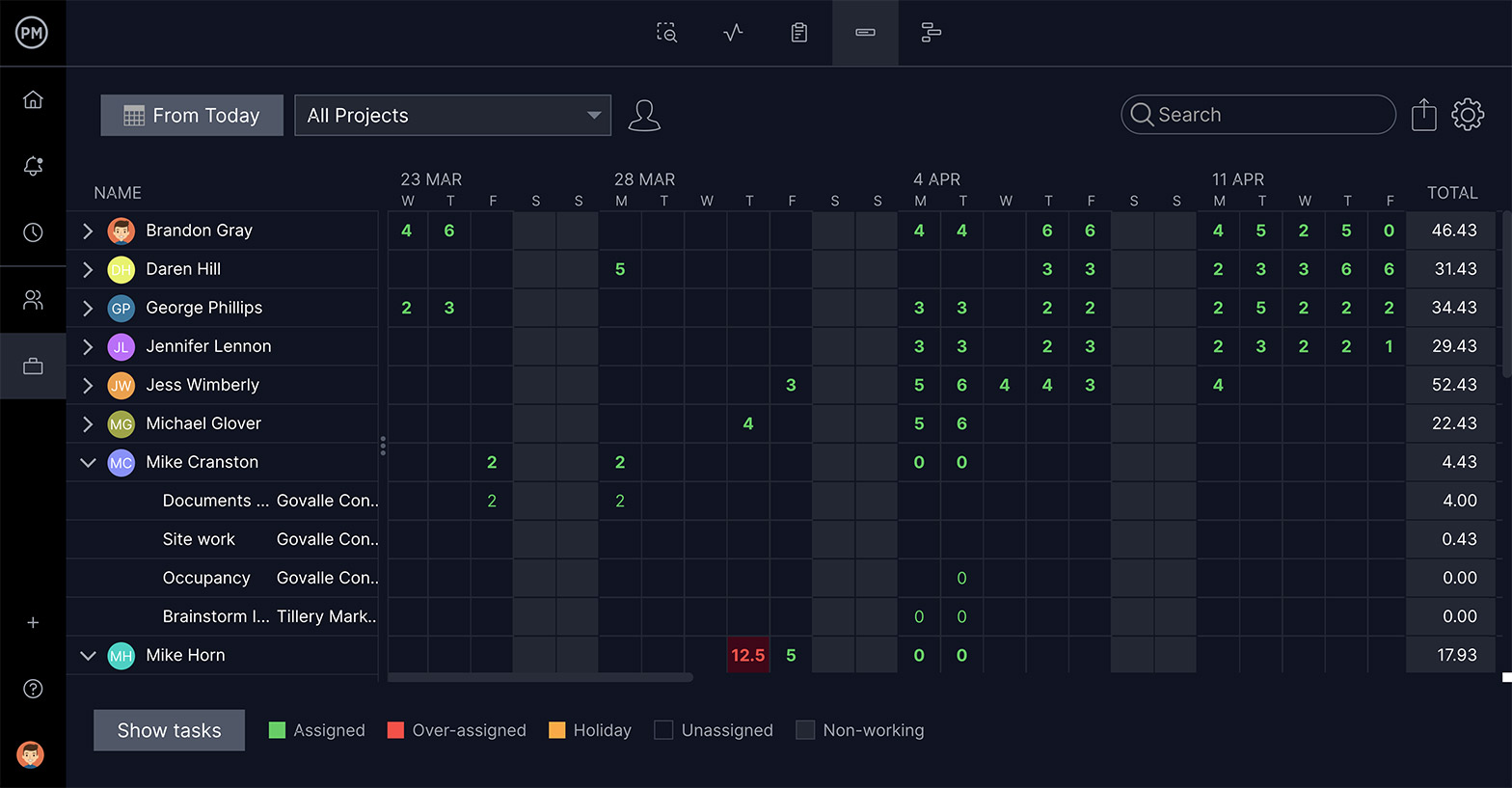
Manage Your Team on the Team Page
There’s also a Team Page that shows an overview of the project. You can see each member of the team’s status, the number of tasks they’re assigned and the priority of their tasks. You can also drill down into the team’s profile to see their availability, skills and more. A graph lets you quickly see the tasks assigned and which have been completed and those that are still active.
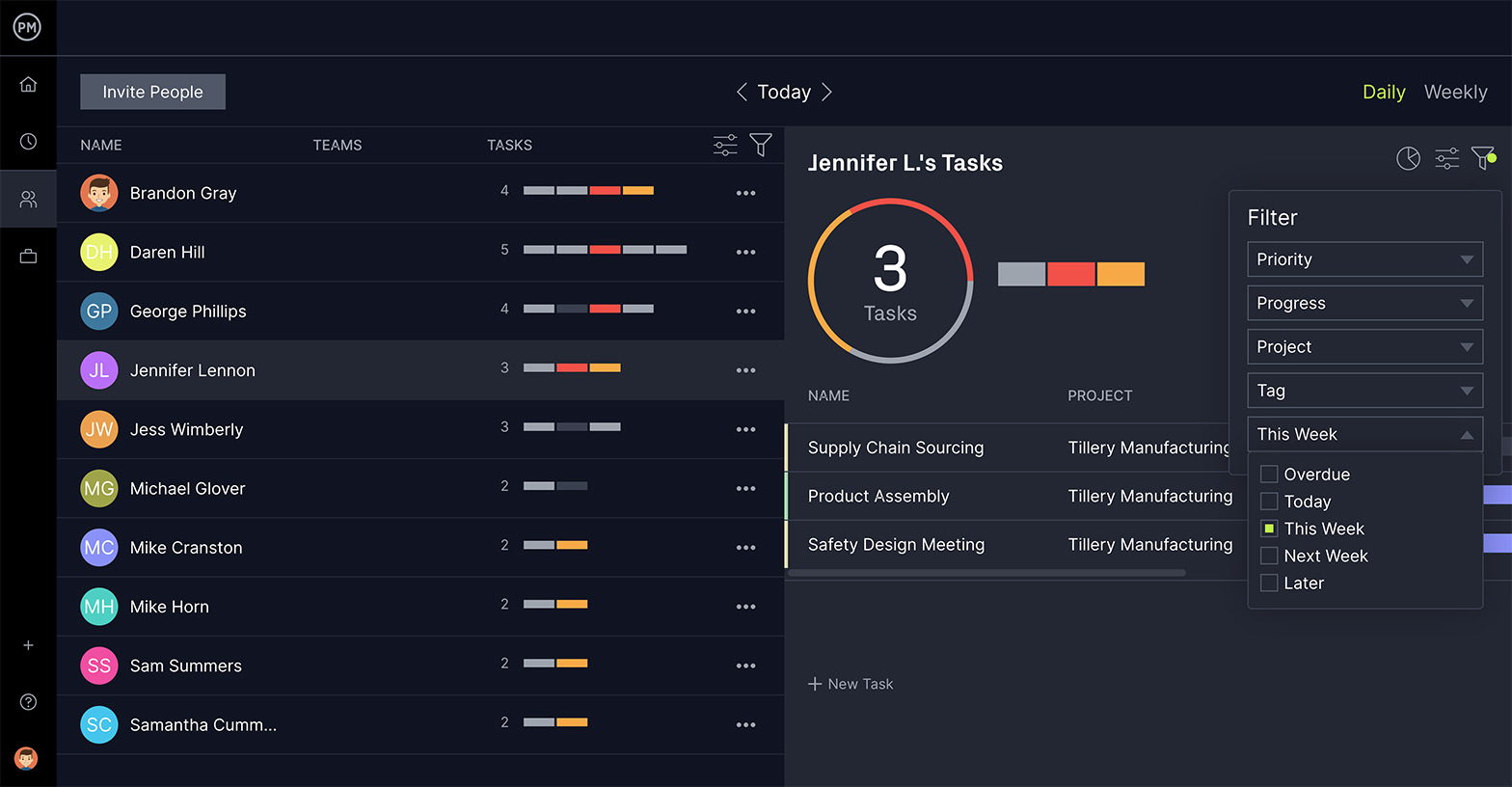
Create Plans on Gantt Charts
With ProjectManager’s Gantt chart, you can track resources other than your human resources. You can set availability, then set notifications to keep you automatically alerted to changes to the project. The real-time dashboard gives you a high-level view of the project, and reports let you to dig in deeper for more data. Plus, reports can be filtered and shared to keep stakeholders updated on what they want to know.
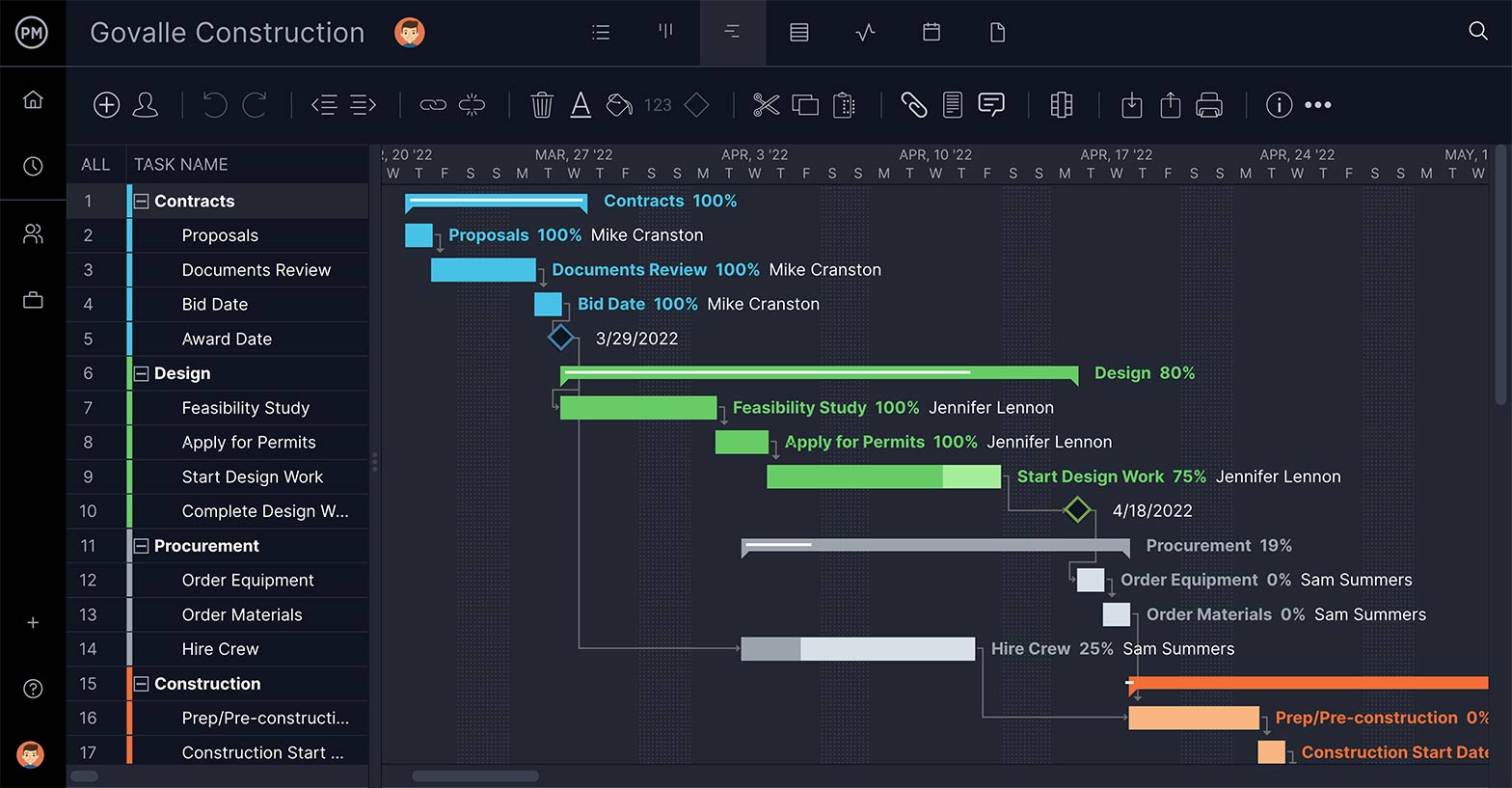
Related Content
ProjectManager is award-winning software that plans, tracks and reports on your project resources. Get real-time data to make more insightful decisions. Join the tens of thousands of teams already using our tool to deliver success. Try ProjectManager today for free.

